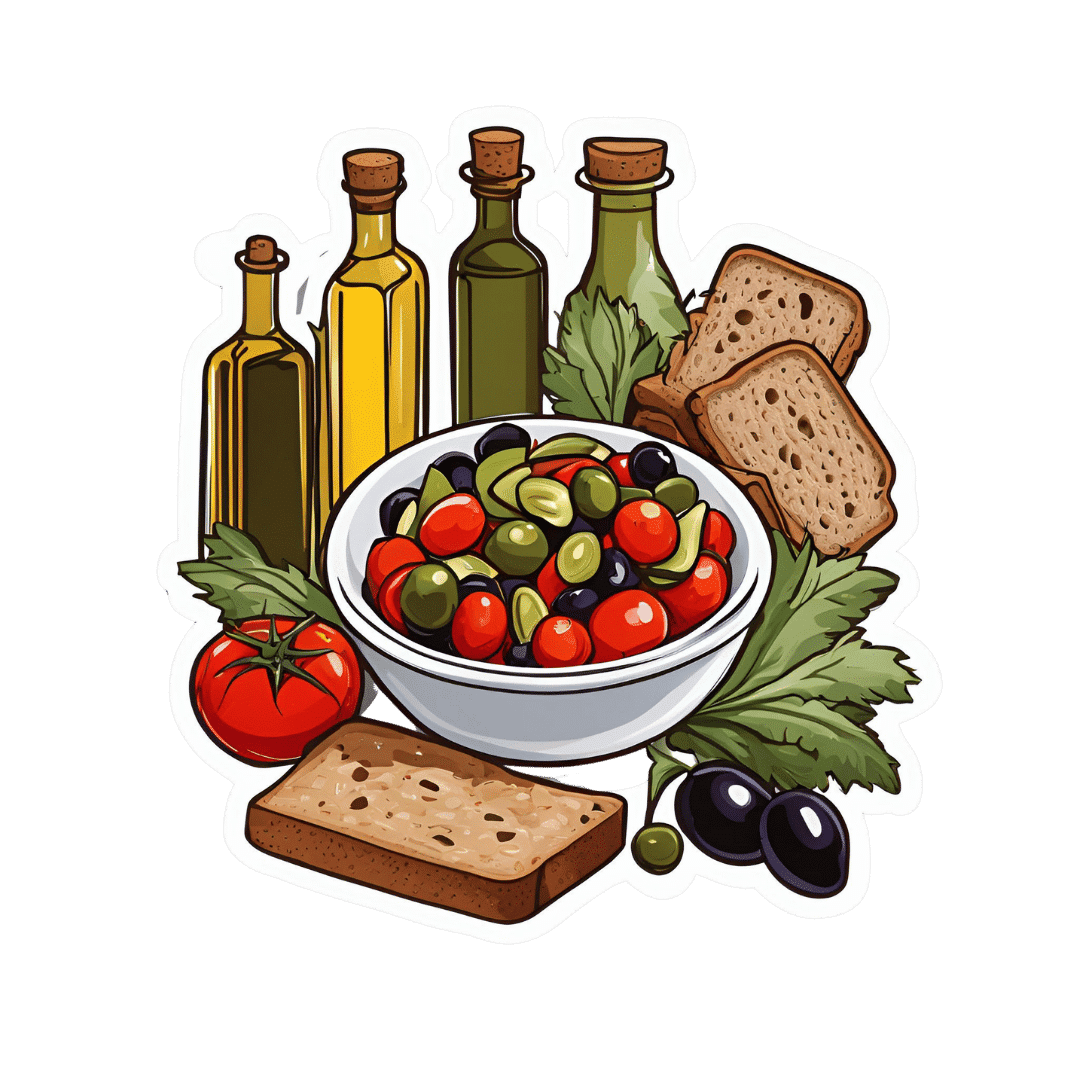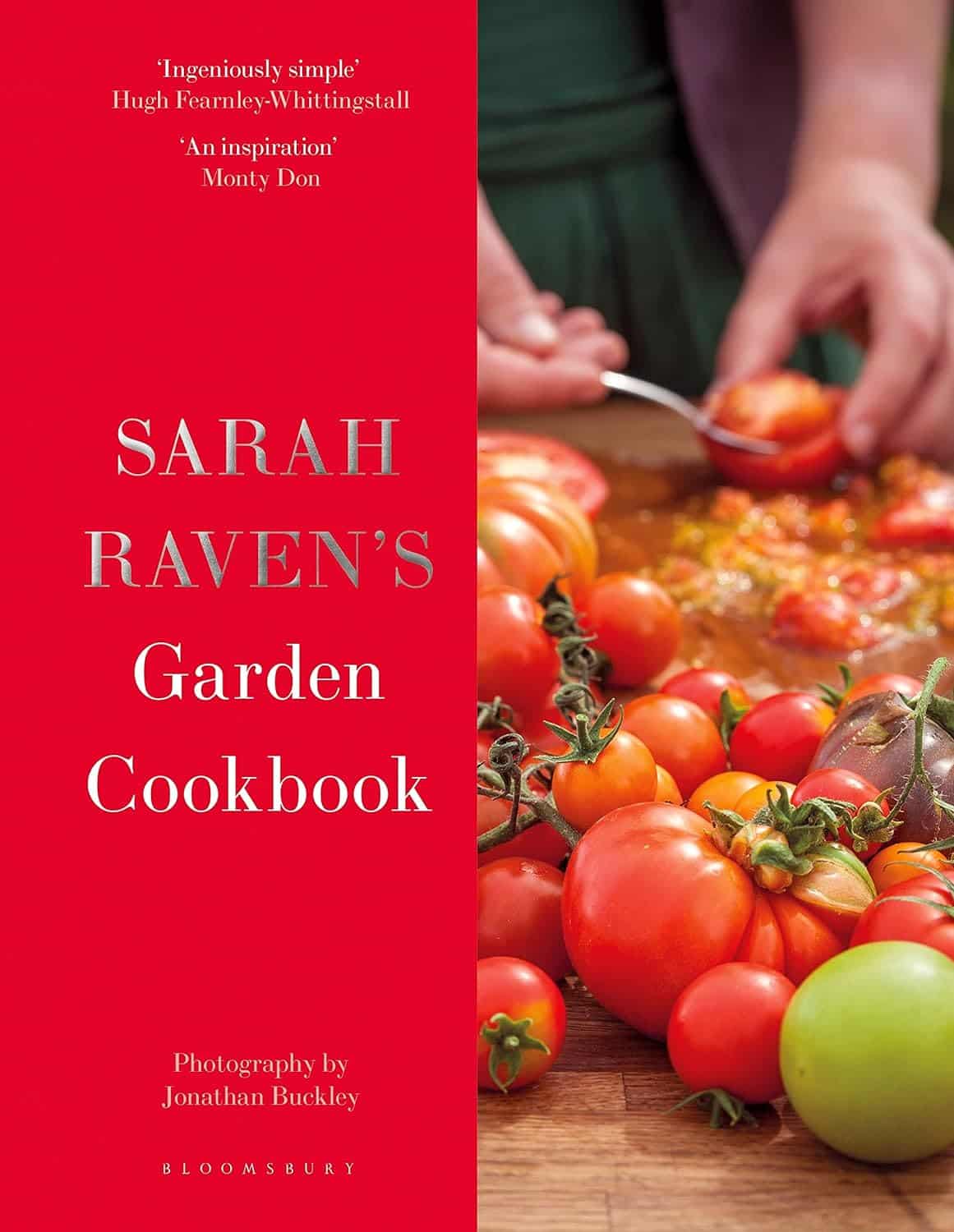
Prevention Is Better Than Cure
10almonds is reader-supported. We may, at no cost to you, receive a portion of sales if you purchase a product through a link in this article.
Preventative healthcare is the theme this week:
New year, new risks
The start of a new year is a great time to update adult vaccinations, including the flu shot, any COVID-19 boosters, and vaccines for pneumonia, shingles, and tetanus—when was your last booster, after all? Vaccination recommendations vary by age and health conditions, so do check what’s appropriate in your case. Key vaccines include the pneumonia vaccine for those 65 and older, the shingles vaccine for adults over 50, and the Tdap vaccine every 10 years to protect against tetanus, diphtheria, and pertussis (whooping cough), especially for new parents and grandparents, to protect infants:
Read in full: Why it’s important to update adult vaccinations for a new year
Related: The Truth About Vaccines
The heart-healthiest swap you can do
Based on a large (n=202,863, of which 160,123 women and 42,740 men) dataset, a higher plant-to-animal protein ratio is associated with significantly lower risks of cardiovascular disease (CVD) and coronary artery disease (CAD), with diets lower in meat (especially if lower in red meat) and instead rich in plant-based proteins like legumes, nuts, and whole grains reducing CVD risk by 19% and coronary artery disease risk by 27%. Which is quite considerable.
Substituting even small amounts of animal protein (especially if it’s red meat) with plant protein further enhances heart health:
Read in full: Higher plant-to-animal protein ratio linked to lower risk for CVD, CAD among U.S. adults
Related: Plant vs Animal Protein: Head to Head
Let’s keep pan-resistant superbugs at bay
Researchers want to warn us about the threat of pan-resistant bacteria, which could render all known antibiotics ineffective, leading to a sharp rise in global infection-related deaths.
To be clear, we don’t have anything pan-resistant yet, but antibiotic-resistant superbugs are getting close, and in the long term, are likely to win the evolutionary arms race if we don’t change things to diverge considerably from our current path. Modeling a hypothetical pan-resistant E. coli strain, researchers predicted U.S. sepsis deaths could increase 18- to 46-fold within five years of its emergence.
The study calls for urgent action, including stricter antibiotic stewardship, new drug development, and monitoring technologies, emphasizing that without intervention, the global impact could be catastrophic:
Read in full: A public health emergency is waiting at the bottom of the antibiotic resistance cliff
Related: Stop Sabotaging Your Immune System ← see also (linked therein), 4 ways antibiotics can kill you
Take care!
Don’t Forget…
Did you arrive here from our newsletter? Don’t forget to return to the email to continue learning!
Recommended
Learn to Age Gracefully
Join the 98k+ American women taking control of their health & aging with our 100% free (and fun!) daily emails:
-
Blackberries vs Blueberries – Which is Healthier?
10almonds is reader-supported. We may, at no cost to you, receive a portion of sales if you purchase a product through a link in this article.
Our Verdict
When comparing blackberries to blueberries, we picked the blackberries.
Why?
They’re both great! But the humble blackberry stands out (and is an example of “foods that are darker are often more nutrient-dense”).
In terms of macronutrients, they’re quite similar, being both berry fruits that are mostly water, but blackberries do have 2x the fiber (and for what it’s worth, 2x the protein, though this is a small number obviously), while blueberries have 2x the carbohydrates. An easy win for blackberries.
When it comes to vitamins, blackberries have notably more of vitamin A, B3, B5, B9, C, and E, as well as choline, while blueberries have a little more of vitamins B1, B2, and B6. A fair win for blackberries.
In the category of minerals, blackberries have a lot more calcium, copper, iron, magnesium, manganese, phosphorus, potassium, selenium, and zinc. Blueberries are not higher in any minerals. Another easy win for blackberries.
Blueberries are famous for their antioxidants, but blackberries actually equal them. The polyphenolic content varies from one fruit to another, but they are both loaded with an abundance (thousands) of antioxidants, especially anthocyanins. Blackberries and blueberries tie in this category.
Adding up the sections makes for an easy, easy win for blackberries—but diversity is always best, so enjoy both!
Want to learn more?
You might like to read:
- Cherries vs Blueberries – Which is Healthier?
- Strawberries vs Cherries – Which is Healthier?
- Strawberries vs Raspberries – Which is Healthier?
- Goji Berries vs Blueberries – Which is Healthier?
Take care!
Share This Post
-
AI: The Doctor That Never Tires?
10almonds is reader-supported. We may, at no cost to you, receive a portion of sales if you purchase a product through a link in this article.
AI: The Doctor That Never Tires?
We asked you for your opinion on the use of Artificial Intelligence (AI) in healthcare, and got the above-depicted, below-described set of results:
- A little over half of respondents to the poll voted for “It speeds up research, and is more methodical about diagnosis, so it’s at least a good extra tool”
- A quarter of respondents voted for “I’m on the fence—it seems to make no more nor less mistakes than human doctors do”
- A little under a fifth of respondents voted for “AI is less prone to fatigue/bias than human doctors, making it an essential new tech”
- Three respondents voted for “AI is a step too far in medical technology, and we’re not ready for it”
Writer’s note: I’m a professional writer (you’d never have guessed, right?) and, apparently, I really did write “no more nor less mistakes”, despite the correct grammar being “no more nor fewer mistakes”. Now, I know this, and in fact, people getting less/fewer wrong is a pet hate of mine. Nevertheless, I erred.
Yet, now that I’m writing this out in my usual software, and not directly into the poll-generation software, my (AI!) grammar/style-checker is highlighting the error for me.
Now, an AI could not do my job. ChatGPT would try, and fail miserably. But can technology help me do mine better? Absolutely!
And still, I dismiss a lot of the AI’s suggestions, because I know my field and can make informed choices. I don’t follow it blindly, and I think that’s key.
AI is less prone to fatigue/bias than human doctors, making it an essential new tech: True or False?
True—with one caveat.
First, a quick anecdote from a subscriber who selected this option in the poll:
❝As long as it receives the same data inputs as my doctor (ie my entire medical history), I can see it providing a much more personalised service than my human doctor who is always forgetting what I have told him. I’m also concerned that my doctor may be depressed – not an ailment that ought to affect AI! I recently asked my newly qualified doctor goddaughter whether she would prefer to be treated by a human or AI doctor. No contest, she said – she’d go with AI. Her argument was that human doctors leap to conclusions, rather than properly weighing all the evidence – meaning AI, as long as it receives the same inputs, will be much more reliable❞
Now, an anecdote is not data, so what does the science say?
Well… It says the same:
❝Of 6695 responding physicians in active practice, 6586 provided information on the areas of interest: 3574 (54.3%) reported symptoms of burnout, 2163 (32.8%) reported excessive fatigue, and 427 (6.5%) reported recent suicidal ideation, with 255 of 6563 (3.9%) reporting a poor or failing patient safety grade in their primary work area and 691 of 6586 (10.5%) reporting a major medical error in the prior 3 months. Physicians reporting errors were more likely to have symptoms of burnout (77.6% vs 51.5%; P<.001), fatigue (46.6% vs 31.2%; P<.001), and recent suicidal ideation (12.7% vs 5.8%; P<.001).❞
See the damning report for yourself: Physician Burnout, Well-being, and Work Unit Safety Grades in Relationship to Reported Medical Errors
AI, of course, does not suffer from burnout, fatigue, or suicidal ideation.
So, what was the caveat?
The caveat is about bias. Humans are biased, and that goes for medical practitioners just the same. AI’s machine learning is based on source data, and the source data comes from humans, who are biased.
See: Bias and Discrimination in AI: A Cross-Disciplinary Perspective
So, AI can perpetuate human biases and doesn’t have a special extra strength in this regard.
The lack of burnout, fatigue, and suicidal ideation, however, make a big difference.
AI speeds up research, and is more methodical about diagnosis: True or False?
True! AI is getting more and more efficient at this, and as has been pointed out, doesn’t make errors due to fatigue, and often comes to accurate conclusions near-instantaneously. To give just one example:
❝Deep learning algorithms achieved better diagnostic performance than a panel of 11 pathologists participating in a simulation exercise designed to mimic routine pathology workflow; algorithm performance was comparable with an expert pathologist interpreting whole-slide images without time constraints. The area under the curve was 0.994 (best algorithm) vs 0.884 (best pathologist).❞
About that “getting more and more efficient at this”; it’s in the nature of machine learning that every new piece of data improves the neural net being used. So long as it is getting fed new data, which it can process at rate far exceeding humans’ abilities, it will always be constantly improving.
AI makes no more nor
lessfewer mistakes than humans do: True or False?False! AI makes fewer, now. This study is from 2021, and it’s only improved since then:
❝Professionals only came to the same conclusions [as each other] approximately 75 per cent of the time. More importantly, machine learning produced fewer decision-making errors than did all the professionals❞
See: AI can make better clinical decisions than humans: study
All that said, we’re not quite at Star Trek levels of “AI can do a human’s job entirely” just yet:
BMJ | Artificial intelligence versus clinicians: pros and cons
To summarize: medical AI is a powerful tool that:
- Makes healthcare more accessible
- Speeds up diagnosis
- Reduces human error
…and yet, for now at least, still requires human oversights, checks and balances.
Essentially: it’s not really about humans vs machines at all. It’s about humans and machines giving each other information, and catching any mistakes made by the other. That way, humans can make more informed decisions, and still keep a “hand on the wheel”.
Share This Post
-
What Size Breakfast Is Best, By Science?
10almonds is reader-supported. We may, at no cost to you, receive a portion of sales if you purchase a product through a link in this article.
“Breakfast is the most important meal of the day”, the popular wisdom goes. But, what should it consist of, and how much should we be eating for breakfast?
It has been previously established that it is good if breakfast is the largest meal of the day:
…with meals getting progressively smaller thereafter.
Of course, very many people do the inverse: small (or skipped) breakfast, moderate lunch, larger dinner. This, however, is probably more a result of when eating fits around the modern industrialized workday (and thus gets normalized), rather than actual health considerations.
So, what’s the latest science?
A plucky band of researchers led by Dr. Karla-Alejandra Pérez-Vega investigated the importance of breakfast in the context of heart health. This research was done as part of a larger study into the effects of the Mediterranean Diet on cardiovascular health, so if anyone wants a quick recap before we carry on, then:
The Mediterranean Diet: What Is It Good For? ← the answer, by the way, is “pretty much everything”
…and there are also different versions that each use the Mediterranean Diet as the core, while focussing extra on a different area of health, including one to make it extra heart-healthy:
Four Ways To Upgrade The Mediterranean ← most anti-inflammatory / gut-healthiest / heart-healthiest / brain-healthiest
What they found
In their sample population (n=383) of Spanish adults aged 55–75 with pre-diagnosed metabolic syndrome who, as part of the intervention of this 36-month interventional study, had now for the past 36 months been on a Mediterranean diet but without specific guidance on portion sizes:
- Participants with insufficient breakfast energy intake had the highest adiposity (which is a measure of body fat expressed as a percentage of total mass)
- Participants with low or high (but not moderate) breakfast energy intake had the larger BMI and waist circumference over time
- Participants with low or high (but not moderate) breakfast energy intake had higher triglyceride and lower HDL (good) cholesterol levels
- Participants who consumed 20–30% of their daily calories at breakfast enjoyed the greatest improvements in lipid profiles, with lower triglycerides and higher HDL (good) cholesterol levels
- Participants with lower breakfast quality (lower adherence to Mediterranean Diet) had higher blood pressure levels
- Participants with lower breakfast quality (lower adherence to Mediterranean Diet) had higher blood sugar levels
- Participants with lower breakfast quality (lower adherence to Mediterranean Diet) had lower estimated glomerular filtration rate (which is an indicator of kidney function)
- Participants with higher breakfast quality (higher adherence to Mediterranean Diet) had lower waist circumference, higher HDL cholesterol, and better kidney function
You can see the paper itself here in the Journal of Nutrition, Health, and Aging:
What this means
According to this research, the heart-healthiest breakfast is:
- not skipped
- Mediterranean Diet adherent
- within the range of of 20–30% of the total calories for the day
Want to make it even better?
Consider:
Before You Eat Breakfast: 3 Surprising Facts About Intermittent Fasting
Enjoy!
Share This Post
Related Posts
-
Glycemic Index vs Glycemic Load vs Insulin Index
10almonds is reader-supported. We may, at no cost to you, receive a portion of sales if you purchase a product through a link in this article.
How To Actually Use Those Indices
Carbohydrates are essential for our life, and/but often bring about our early demise. It would be a very conveniently simple world if it were simply a matter of “enjoy in moderation”, but the truth is, it’s not that simple.
To take an extreme example, for the sake of clearest illustration: The person who eats an 80% whole fruit diet (and makes up the necessary protein and fats etc in the other 20%) will probably be healthier than the person who eats a “standard American diet”, despite not practising moderation in their fruit-eating activities. The “standard American diet” has many faults, and one of those faults is how it promotes sporadic insulin spikes leading to metabolic disease.
If your breakfast is a glass of orange juice, this is a supremely “moderate” consumption, but an insulin spike is an insulin spike.
Quick sidenote: if you’re wondering why eating immoderate amounts of fruit is unlikely to cause such spikes, but a single glass of orange juice is, check out:
Which Sugars Are Healthier, And Which Are Just The Same?
Glycemic Index
The first tool in our toolbox here is glycemic index, or GI.
GI measures how much a carb-containing food raises blood glucose levels, also called blood sugar levels, but it’s just glucose that’s actually measured, bearing in mind that more complex carbs will generally get broken down to glucose.
Pure glucose has a GI of 100, and other foods are ranked from 0 to 100 based on how they compare.
Sometimes, what we do to foods changes its GI.
- Some is because it changed form, like the above example of whole fruit (low GI) vs fruit juice (high GI).
- Some is because of more “industrial” refinement processes, such as whole grain wheat (medium GI) vs white flour and white flour products (high GI)
- Some is because of other changes, like starches that were allowed to cool before being reheated (or eaten cold).
Broadly speaking, a daily average GI of 45 is considered great.
But that’s not the whole story…
Glycemic Load
Glycemic Load, or GL, takes the GI and says “ok, but how much of it was there?”, because this is often relevant information.
Refined sugar may have a high GI, but half a teaspoon of sugar in your coffee isn’t going to move your blood sugar levels as much as a glass of Coke, say—the latter simply has more sugar in, and just the same zero fiber.
GL is calculated by (grams of carbs / 100) x GI, by the way.
But it still misses some important things, so now let’s look at…
Insulin Index
Insulin Index, which does not get an abbreviation (probably because of the potentially confusing appearance of “II”), measures the rise in insulin levels, regardless of glucose levels.
This is important, because a lot of insulin response is independent of blood glucose:
- Some is because of other sugars, some some is in response to fats, and yes, even proteins.
- Some is a function of metabolic base rate.
- Some is a stress response.
- Some remains a mystery!
Another reason it’s important is that insulin drives weight gain and metabolic disorders far more than glucose.
Note: the indices of foods are calculated based on average non-diabetic response. If for example you have Type 1 Diabetes, then when you take a certain food, your rise in insulin is going to be whatever insulin you then take, because your body’s insulin response is disrupted by being too busy fighting a civil war in your pancreas.
If your diabetes is type 2, or you are prediabetic, then a lot of different things could happen depending on the stage and state of your diabetes, but the insulin index is still a very good thing to be aware of, because you want to resensitize your body to insulin, which means (barring any urgent actions for immediate management of hyper- or hypoglycemia, obviously) you want to eat foods with a low insulin index where possible.
Great! What foods have a low insulin index?
Many factors affect insulin index, but to speak in general terms:
- Whole plant foods are usually top-tier options
- Lean and/or white meats generally have lower insulin index than red and/or fatty ones
- Unprocessed is generally lower than processed
- The more solid a food is, generally the lower its insulin index compared to a less solid version of the same food (e.g. baked potatoes vs mashed potatoes; cheese vs milk, etc)
But do remember the non-food factors too! This means where possible:
- reducing/managing stress
- getting frequent exercise
- getting good sleep
- practising intermittent fasting
See for example (we promise you it’s relevant):
Fix Chronic Fatigue & Regain Your Energy, By Science
…as are (especially recommendable!) the two links we drop at the bottom of that page; do check them out if you can
Take care!
Don’t Forget…
Did you arrive here from our newsletter? Don’t forget to return to the email to continue learning!
Learn to Age Gracefully
Join the 98k+ American women taking control of their health & aging with our 100% free (and fun!) daily emails:
-
Sarah Raven’s Garden Cookbook – by Sarah Raven
10almonds is reader-supported. We may, at no cost to you, receive a portion of sales if you purchase a product through a link in this article.
Note: the US Amazon site currently (incorrectly) lists the author as “Jonathan Buckley”. The Canadian, British, and Australian sites all list the author correctly as Sarah Raven, and some (correctly) credit Jonathan Buckley as the photographer she used.
First, what it’s not: a gardening book. Beyond a few helpful tips, pointers, and “plant here, harvest here” instructions, this book assumes you are already capable of growing your own vegetables.
She does assume you are in a temperate climate, so if you are not, this might not be the book for you. Although! The recipes are still great; it’s just you’d have to shop for the ingredients and they probably won’t be fresh local produce for the exact same reason that you didn’t grow them.
If you are in a temperate climate though, this will take you through the year of seasonal produce (if you’re in a temperate climate but it’s in for example Australia, you’ll need to make a six-month adjustment for being in the S. Hemisphere), with many recipes to use not just one ingredient from your garden at a time, but a whole assortment, consistent with the season.
About the recipes: they (which are 450 in number) are (as you might imagine) very plant-forward, but they’re generally not vegan and often not vegetarian. So, don’t expect that you’ll produce everything yourself—just most of the ingredients!
Bottom line: if you like cooking, and are excited by the idea of growing your own food but are unsure how regularly you can integrate that, this book will keep you happily busy for a very long time.
Click here to check out Sarah Raven’s Garden Cookbook, and level-up your home cooking!
Don’t Forget…
Did you arrive here from our newsletter? Don’t forget to return to the email to continue learning!
Learn to Age Gracefully
Join the 98k+ American women taking control of their health & aging with our 100% free (and fun!) daily emails:
-
Is Unnoticed Environmental Mold Harming Your Health?
10almonds is reader-supported. We may, at no cost to you, receive a portion of sales if you purchase a product through a link in this article.
Environmental mold can be a lot more than just the famously toxic black mold that sometimes makes the headlines, and many kinds you might not notice, but it can colonizes your sinuses and gut just the same:
Breaking the mold
Around 25% of homes in North America are estimated to have mold, though the actual number is likely to be higher, affecting both older and new homes. For that matter, mold can grow in unexpected areas, like inside air conditioning units, even in dry regions.
If mold just sat where it is minding its own business, it might not be so bad, but instead they release their spores, which are de facto airborne mycotoxins, which can colonize places like the sinuses or gut, causing significant health issues.
Not everyone in the same household is affected the same way by mold due to genetic differences and varying pre-existing health conditions. But as a general rule of thumb, mold inflames the brain, nerves, gut, and skin, and can negatively impact the vagal nerve, which is linked to the gut-brain connection. Mycotoxins also damage mitochondria, leading to symptoms like fatigue, brain fog, and cognitive issues. To complicate matters further, mold illness can mimic other conditions like anxiety, chronic fatigue, fibromyalgia, IBS, and more, making it difficult to diagnose.
Testing is possible, though they all have limitations, e.g:
- Home testing: testing the home for mold spores and mycotoxins is crucial for effective treatment; professional mold remediation companies are a good idea (to do a thorough job of cleaning, without also breathing in half the mold while cleaning it).
- Mold allergy testing: mold allergy testing (IgE testing or skin tests) is often used, but it doesn’t diagnose mold-related illnesses linked to severe symptoms like fatigue or neurodegeneration.
- Serum antibody testing: tests for immune reactions (IgG) to mycotoxins may not always show positive results if the immune system is weakened by long-term exposure.
- Urine mycotoxin testing: urine tests can detect mycotoxins in the body, though are likely to be more expensive, being probably not covered by public health in Canada or insurance in the US.
- Organic acid testing: this urine test can indicate mold colonization in areas like the sinuses or gut. Again, cost/availability may vary, though.
For more information on all of this, enjoy:
Click Here If The Embedded Video Doesn’t Load Automatically!
Want to learn more?
You might also like to read:
Take care!
Don’t Forget…
Did you arrive here from our newsletter? Don’t forget to return to the email to continue learning!
Learn to Age Gracefully
Join the 98k+ American women taking control of their health & aging with our 100% free (and fun!) daily emails:








